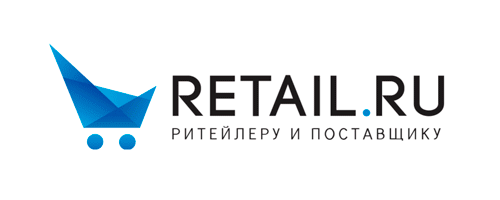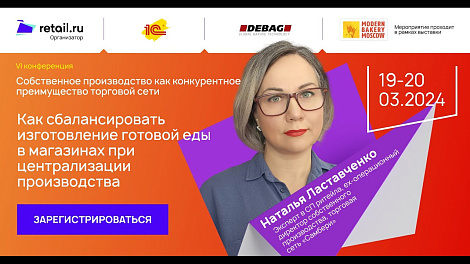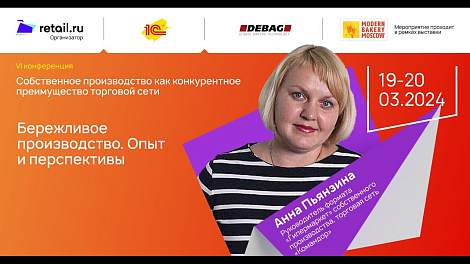By Michael Bergdahl,
International Speaker, Author & Wal-Mart Competition Authority
This past year I was invited to speak at a business conference in Panama City, Panama about the Best Practices of the World’s Largest Company . . .Wal-Mart. While I was there, I decided to visit the Panama Canal. It was just a short drive from the Hotel El Panama to the Miraflores Locks where I had lunch at the café, overlooking the canal. The view was both spectacular, and surreal, as I watched the heavily laden container ships moving from the Pacific Ocean to the Atlantic Ocean and vice versa. I learned that by 2015 Panama plans to widen the canal allowing the passage of even larger container ships. Currently the biggest ships that can navigate the canal and locks carry up to 4,000 containers. After the widening is complete, ships carrying more than 11,000 containers will be able to make the trip.
For some reason, as I watched the container ships passing through the Panama Canal, I thought about the impact that widening the canal would have on the way Wal-Mart (and its competitors) ships freight into the United States, and for that matter, around the world. At the present time, most of its containers filled with products bound for American consumers enter the USA through the Ports of Los Angeles / Long Beach, California. With a history of labor problems and strikes, it’s hard to believe the Los Angeles / Long Beach, California ports still maintains a monopoly on container shipments entering into the United States. It is estimated that 2/3 of the container shipments entering the USA from China and Asia pass through the LA / Long Beach Terminals. In the past, dock worker strikes at Long Beach have crippled manufacturers and retailers around the world. I have heard that during the last strike, container ships were lined up across the Pacific Ocean, all the way up the Yangtze River in China, parked and waiting for the strike to end. That’s all about to change. As a result of widening the Panama Canal those bigger container ships will now be able to bypass west coast ports like Seattle, Portland, and Los Angeles in favor of more business friendly ports, in “right to work” states like: Texas, Louisiana, Mississippi and Alabama. Overnight, Houston, Texas will become the “New Los Angeles / Long Beach!” If you think about it from a rail and trucking standpoint, Houston’s middle of the country location will significantly reduce the amount of diesel fuel consumption, while reducing the time required to deliver containers to customers. Shipments into a business friendly state like Texas will also insure the “product pipeline” is always open and flowing. It’s a big win for manufacturers, suppliers, retailers, and consumers alike as productivity will go up and costs will come down for moving containers from ship, to rail, to road through Houston! You can bet the big international shippers from the USA and around the world are already gearing up to take advantage of that southern hospitality!
Since the cost of container shipping is about to come down once again, you can bet that suppliers and manufacturers for companies like Wal-Mart are already planning for the future. There is little doubt that the widening of the Panama Canal will change the supply chain strategies of retailers and manufacturers around the world. Wal-Mart has already booked passage for its products on the world’s largest container vessel the Emma Maersk, capable of ferrying 11,000 containers. The Port of Houston, in turn, is already preparing for a windfall of new business by preparing its docks and dredging its harbor to handle the parade of mega ships. The Emma Maersk is the first of a fleet of super container ships which will be up and running by the time Panama opens their widened canal. There is even talk that Mexico, Nicaragua and Colombia are all considering digging their own canals so they too can tap into the mega ship bonanza about to unfold. The financial opportunities are huge and the risks are relatively low for Panama, because there are more than five million containers in transit across the globe at any given time and each year that number is growing.
The fact that Panama is a logistics driven country is about to change the way Wal-Mart, a supply chain driven company, ships containers across the world and transports freight throughout North and South America! The widening of the Panama Canal fits right into Wal-Mart’s logistics strategy, which is all about finding ways to reduce and eliminate costs. Low transportation costs allow it to sell its products at the lowest possible prices, which in turn makes retail competition with them a real nightmare. Wal-Mart’s low price strategy is no dream come true for many of its large and small suppliers either as many of them either break even or “trade dollars’ supplying Wal-Mart’s stores. The big winners in the race to sell at rock bottom prices are consumers. It is estimated that families of four, that buy groceries at Wal-Mart, save an estimated USD$2500 per year. Those low prices are the reason 175 million customers flock to Wal-Mart’s Stores every week of the year! They’re also the reason 31 regional grocery competitors have gone out of business since Wal-Mart started selling groceries!
So why is Wal-Mart so driven to reduce its costs? One answer is because of Wal-Mart’s commitment to offering low prices to its customers. Another answer is that even though Wal-Mart is the number one company in total annual sales in the World, its profit dollars don’t even rank the company in the top 10! It may be hard to believe, but Wal-Mart’s annual sales last year were USD$350 billion, placing the company on top of the Fortune 500 list, but amazingly, the company only ekes out a 3.2% profit! Wal-Mart’s total dollar profits last year ranked the company at only number twelve on Fortune’s most profitable companies list (in US Dollars)! There’s no need for you to feel sorry for Wal-Mart’s meager profits however, because in real dollars, 3.2% equals USD$11.2 billion in profits! The following chart illustrates the twelve most profitable American companies in 2006, ranked by profit dollars.
Company *Sales $ Profit $ Profit %
(In Billions of US Dollars)
- Exxon Mobil $347.2 $39.5 11.3%
- Citigroup $146.7 $21.5 14.6%
- Bank of America $117.0 $21.1 18.0%
- GE $168.3 $20.8 12.3%
- Pfizer $ 52.4 $19.3 36.8%
- Chevron $200.6 $17.1 8.5%
- Conoco Phillips $172.4 $15.5 8.9%
- JP Morgan Chase $ 99.9 $14.4 14.4%
- AIG $113.1 $14.0 12.3%
- Microsoft $ 44.3 $12.6 28.4%
- Altria Group $ 70.3 $12.0 17.0%
- Wal-Mart $351.0 $11.2 3.2%
* Figures are quoted from the April 30th, 2007 issue of Fortune Magazine.
When you understand the Wal-Mart profitability model it helps you understand why Wal-Mart’s leaders are downright fanatical about driving costs out of the supply chain. To them the widening of the Panama Canal is just another opportunity to lower costs to protect their razor thin profit margins! With almost 7000 stores, 120 massive distribution centers and operations expanding in 15 countries, Wal-Mart’s leaders must focus on continuously improving operations, lowering costs and improving customer service. The ability to manage its supply chain efficiently always has been paramount to the success of its Everyday Low Price Strategy, and to achieving success with its low profitability business model. It is for this reason that many consider Wal-Mart, “a supply chain driven company that also has retail stores.” It’s no secret that the Wal-Mart business model would come crashing down immediately without its renowned technology and supply chain. “The Wal-Mart Way” demands that the company stays on the leading edge of logistics, distribution, transportation, and technology; it must then capitalize upon every opportunity to improve. It isn’t a choice for Wal-Mart’s leaders to continuously improve their supply chain as much as it is a requirement for Wal-Mart to remain competitive and profitable!
So how do Wal-Mart’s leaders rally almost 2 million employees to focus on cost, customers and continuous improvement? Interestingly, they do it by thinking small! While other companies “think big start small and scale up”, Wal-Mart teaches its team to “thing small, start small and then scale up.” It’s hard to believe the store managers, at Wal-Mart, run their individual stores as if they were a single store retailer; just like a small company! Managers are taught to worry about one store at a time, one department at a time, and one customer at a time. The company’s executives push decision making downward and empower store teams to think like entrepreneurs by focusing on making the operations of individual stores the best they can be through a combination of simplification, superior execution and legendary service. Through vendor partnerships Wal-Mart constantly works with world class manufacturers to implement leading edge (and bleeding edge) logistics strategies, like RFID, which are designed to lower costs, reduce out-of-stocks and increase sales. Wal-Mart isn’t afraid to invest money in expensive and controversial supply chain strategies like RFID, if their proforma financial analysis predicts future cost savings.
At Wal-Mart being “in-stock” is the goal of all of its logistical efforts; being out-of-stock is tantamount to being out of business. The key to being in-stock for Wal-Mart is superior technology, a masterful supply chain and in-store execution. Discount retailing demands low prices, and discounting only works with extremely high sales volume. Inventory turn at high velocity backed by automated replenishment insures Wal-Mart sells 100% of its inventory between 72 hours and 60 days upon taking possession of it from its suppliers. Said another way, Wal-Mart’s goal is to turn 100% of its inventory, at a minimum, every 60 days, which insures inventory is sold to consumers before Wal-Mart has even paid their suppliers for it! Like a bank, Wal-Mart makes money, on money!
The bottom line is that Wal-Mart’s low price strategy is made possible because of offshore private label manufacturing, containerization, and modern intermodal logistics. Other major retailers like Target and Home Depot have copied Wal-Mart’s approach, and now use basically the same manufacturing and logistics strategies and tactics, for the same reasons. It is estimated that the cost for shipping products by retailers today has been reduced from around a 15% of retail sales, for shipping products in the pre-containerization world, compared to around 1% of retail sales, for products shipped in containers today. In addition, damage and theft have been dramatically reduced. Flowing of goods, via automated replenishment and using cross docking to achieve just in time distribution, virtually eliminates warehousing of products, further reducing costs for the big box stores. In reality, these stores are massive retail warehouse showrooms!
As I finished my lunch at the Panama Canal that day I came to the realization that the supply chain paradigm is about to shift once again! The good news is, at least this time, supply chain experts have time to prepare for the monumental sea changes (no pun intended) about to unfold. The bad news, for Wal-Mart’s competitors, is that shipping costs for the World’s Largest Company will once again come down putting even more pressure on competitive prices! For decades, Wal-Mart’s focus on technology, logistics, distribution and transportation have been its single most important sustainable competitive advantage. Unfortunately for Wal-Mart, large retailers and manufacturers around the world will continue to copy Wal-Mart’s supply chain innovations and best practices in an effort to re-level the competitive playing field. Again, don’t feel sorry for Wal-Mart because even as its competitors copy its strategies and tactics, Wal-Mart will continue to use its ultimate weapon, to distance itself from its competitors, by growing bigger and faster around the world, by not only leveraging its incredible supply chain, but by leveraging its unmatched economies of scale.
Michael Bergdahl, International Speaker, Author & Wal-Mart Competition AuthorityHis Background: Michael Bergdahl is a professional international business speaker, author and turnaround specialist. Bergdahl worked in Bentonville, Arkansas for Wal-Mart, as the Director of “People” for the headquarters office, where he worked directly with Sam Walton. It was Sam Walton who gave Bergdahl the nickname, “Bird Dawg”! Previous to Wal-Mart he worked in the FMCG Industry for PepsiCo’s Frito-Lay Division in the sales organization and headquarters staff assignments. He’s an experienced turnaround specialist who has participated in two successful business turnarounds at American Eagle Outfitters and Waste Management. as the Director of “People” for the headquarters office, where he worked directly with Sam Walton. It was Sam Walton who gave Bergdahl the nickname, “Bird Dawg”! Previous to Wal-Mart he worked in the FMCG Industry for PepsiCo’s Frito-Lay Division in the sales organization and headquarters staff assignments. He’s an experienced turnaround specialist who has participated in two successful business turnarounds at American Eagle Outfitters and Waste Management.
Wal-Mart Competition Authority: Michael Bergdahl is considered an authority on Wal-Mart Competition. He has appeared on CNN, CNBC, CNN FN, MSNBC, CNN International, CBS National Radio and Bloomberg TV. He has participated in internationally televised news debates on “Power Lunch”, “On the Money”, “Morning Call”, and “Closing Bell”. Articles written by him, and articles written by others about him and his books, have appeared in business newspapers and magazines around the world. He maintains a Wal-Mart Competition Blog on his web site at: www.michaelbergdahl.net
His Books: He wrote his first book about “The Strategies of the World’s Largest Company”, entitled: What I Learned from Sam Walton: How to Compete and Thrive in a Wal-Mart World. His second book is written about “The Tactics of the World’s Richest Man”, entitled, The 10 Rules of Sam Walton: Success Secrets for Remarkable Results. Note:Rob Walton, the current Chairman of the Board of Wal-Mart and son of Sam Walton, wrote the Foreword for “The 10 Rules of Sam Walton” book. Both of these books were published and distributed internationally by John Wiley & Sons. Translated versions of his books are available in Russian, Vietnamese, Thai, Indonesian, Korean, Simplified Chinese, Traditional Chinese and Spanish.
Professional International Speaker: His international keynote speaking experience includes: * Brisbane, Australia * Beijing, China * Melbourne, Australia * Vancouver, British Columbia * Toronto, Ontario * Mont Tremblant, Quebec * Caracas, Venezuela * Bogota, Colombia * Panama City, Panama * Cologne, Germany * Istanbul, Turkey * Malaga, Spain * Moscow, Russia * Port Douglas, Australia * and across the USA.
His Speeches: Michael Bergdahl is a professional international business speaker with substance, who is one part business, one part inspiration and one part storyteller. He customizes his speeches or workshops to fit the conference theme, and he designs them to teach others Wal-Mart’s Best Practices. He presents keynote speeches, ½ programs and full day “Master Classes”. In his speech, “Growing Business the Sam Walton Way”(a.k.a. Picking Wal-Mart’s POCKETS), Bergdahl unveils the strategies of Wal-Mart and the Success Secrets of Sam Walton. Audience members will learn the best practices and tactics of “The World’s Richest Man”, and the strategies of Wal-Mart, “The World’s Largest Company”.
Contact: Michael Bergdahl : www.michaelbergdahl.net – (T) 412-635-2638 – mbergdahl@aol.com






